Sparkly gold embroidery (zardozi) has, to be honest, never been my favourite kind of Indian textile. But during the selection process of pieces for The Fabric of India I have surprised myself by developing a soft spot for other kinds of textile involving metal or metal-wrapped thread, and indeed for the metal materials themselves.
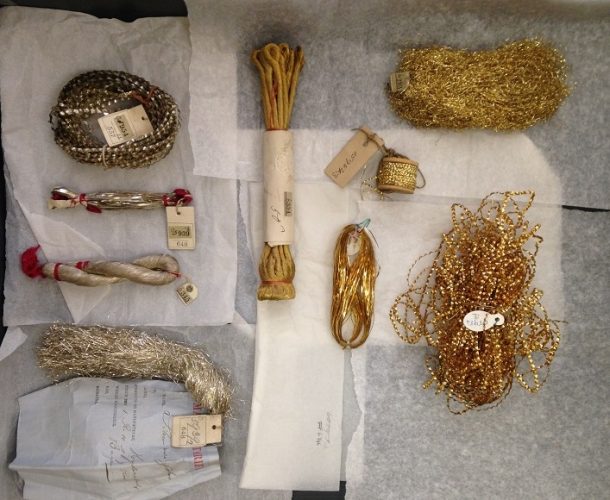
Many of the pieces we encountered are actually subtly beautiful while others are just outrageously shiny. One of the simplest yet most remarkable ways of making one of these gleaming textiles is to actually weave it with wefts or, occasionally, warps which are made up of nothing more than flattened metal strips. These are combined with silk or cotton warps or wefts to weave a surprisingly flexible fabric, which can be used to make glamorous garments for princely patrons.
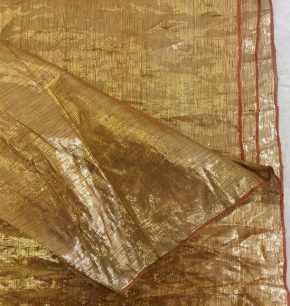

The strips can also be woven with silk to make ribbons called gota which are stitched onto woven fabric. This child’s dress combines silver-woven fabric with strips of gota-work.
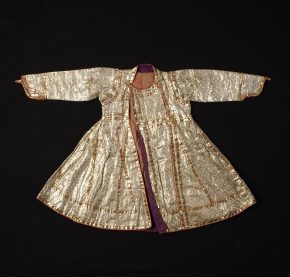
Flattened metal strips can be crimped into decorative finishes to be couched onto the surface of a cloth, often alongside other metallic elements like tiny domed sequins called katori or pieces of coloured metal foil.
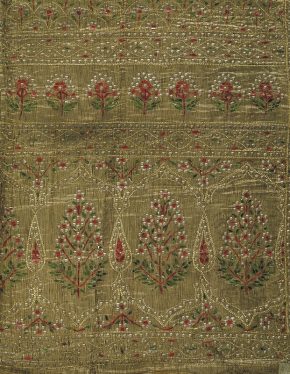
Metal can be integrated into a textile by the use of a silk thread around which an incredibly thin layer of metal is wrapped. This makes a yarn called kalabatun which is thin and flexible enough to be woven or embroidered. This is the material that forms the basis of the famous ‘Benares brocades’.

The inner core of silk thread can sometimes be glimpsed between the spiral wrappings of metal -usually red or yellow silk for a gold effect and white silk for silver. The yellow inner silk threads can be seen in the metallic strands that cover this hat from central India: here they are not woven, but arranged in chevrons, perhaps to suggest wrapped cloth.
One of the most beautiful and understated ways of using kalabatun is seen in the gorgeous and rare Karuppur saris of South India. Here, the metal-wrapped thread brocading is woven first, and then beautifully drawn kalamkari work is added around it. The whole piece is then mordanted and dyed, which means that the metal-wrapped thread is over-dyed with dark red, giving it an amazing subtle glow.
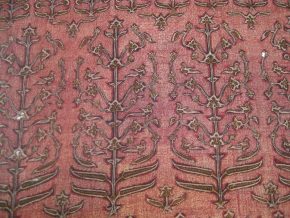

Our colleagues in the Conservation Science section have been testing our metallic yarns and metal strips, and have come up with some interesting results, which will be revealed in ‘All That Glitters…’ part 2, coming soon…


Thank you for info regarding the upcoming exhibit. Anxious to come from the United States to see it.
Looking forward to V&A Indian festival with its emphasis on Fabrics of India, which are so rich, versatile and intricately woven
Hello I am Sharda from India ,have great interest & deals in Antique Indian Textiles would love to share knowledge & interests.
Rosemary mam I have one”Shikargah”(animal figures motif)saree from Hyderabad of nine yards with real gold & silver,I would like to know its age my email is shardakhawadia@hotmail.com ,I will send you pictures.
I will really appreciate your guidance .
Thanks